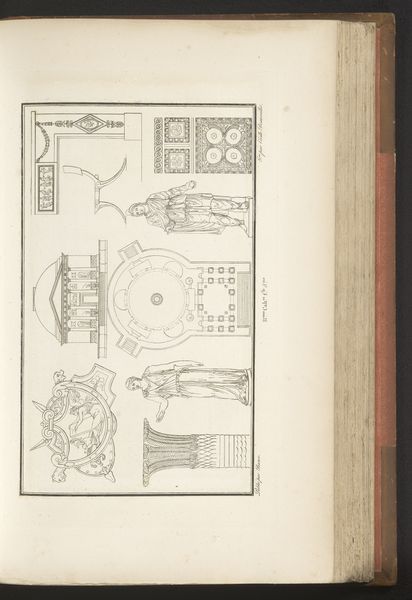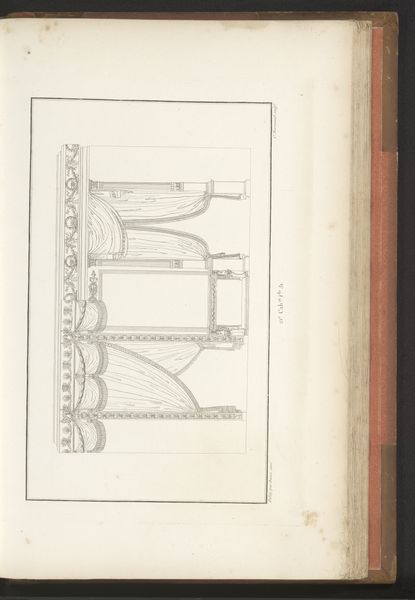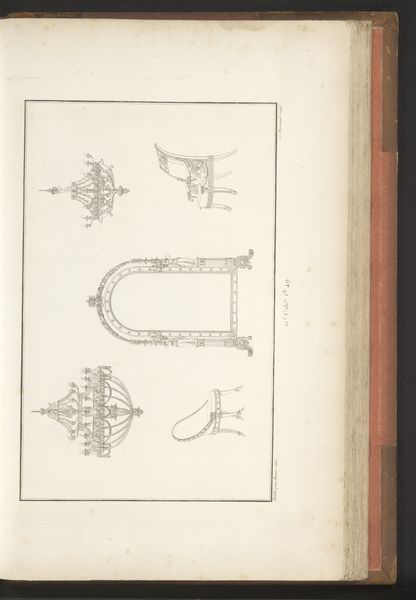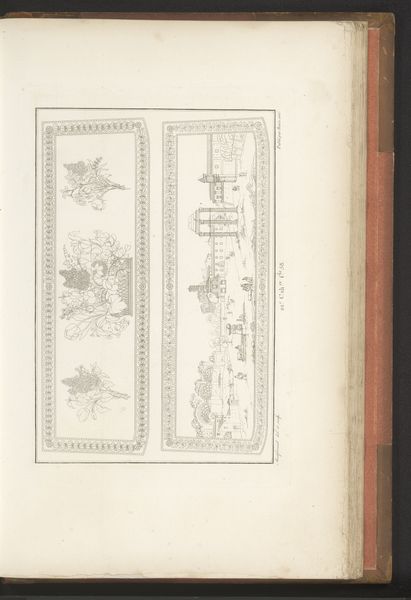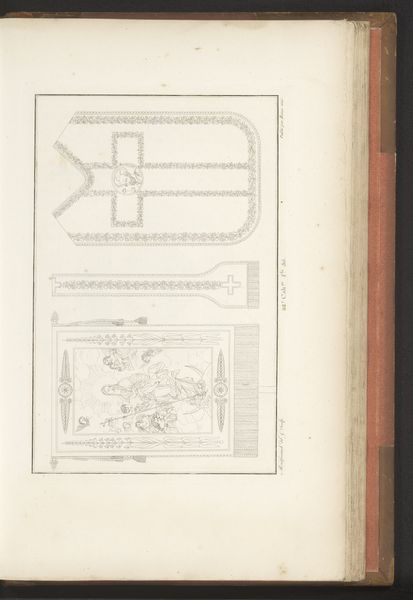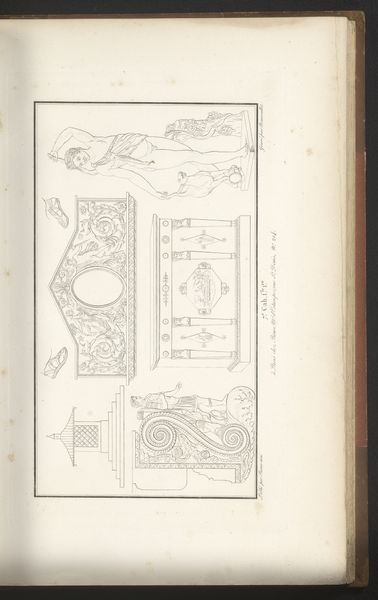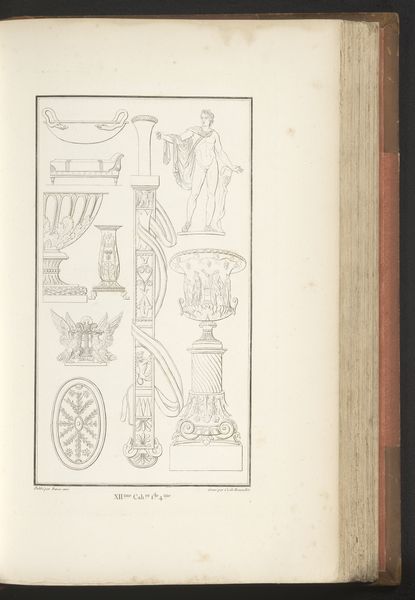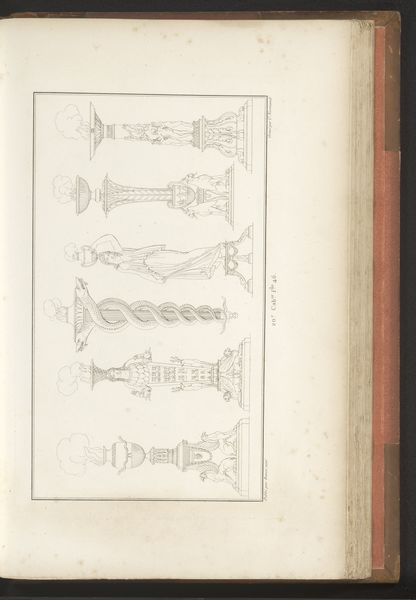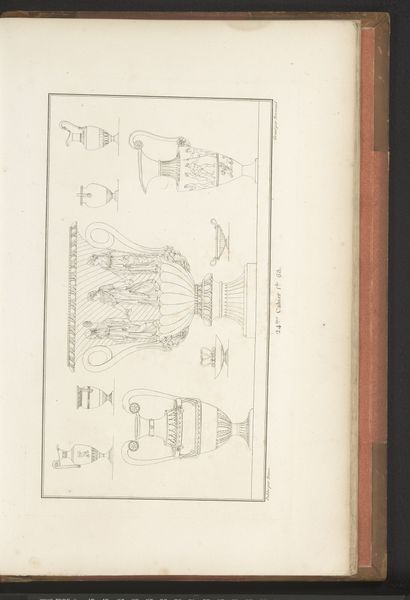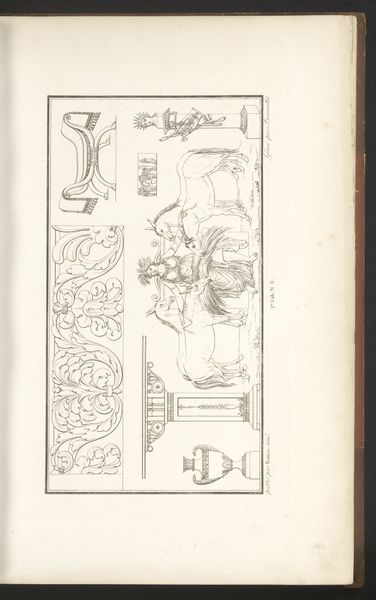
drawing, paper, pen
#
drawing
#
neoclacissism
#
paper
#
pen
#
decorative-art
Dimensions: height mm, width mm
Copyright: Rijks Museum: Open Domain
Curator: Well, these drawings exude a sense of measured elegance! Editor: They do. There's something about the cool, grey lines that feels detached, almost like looking at blueprints for a dream palace. Curator: Precisely! This sheet, "Spiegel, stoel en andere decoratieve meubels" -- Mirror, chair and other decorative furniture--is by Charles Pierre Joseph Normand, dating back to around 1820. It’s rendered in pen on paper and typifies the decorative arts style, which was experiencing a Neoclassical revival at the time. Editor: So, this is an attempt to recreate or reimagine classical ideals of beauty for the 19th century home? I see these classical motifs... are those griffins supporting the mirror? Curator: Spot on! Griffins, those mythical creatures symbolizing strength and guardianship. Notice how they flank the mirror, lending an air of power and prestige. The urns above mirror echo themes of eternity, while the chair's lyre back points toward harmony and art. Editor: It feels quite rigid though. Almost sterile, in a way. Was this aspirational? Is this how the wealthiest citizens furnished their homes at the time or how they wanted to furnish them? Curator: That’s a sharp observation! Neoclassicism was popular with a very specific upper class during a moment that society was in upheaval after the French Revolution and the Napoleonic period. The return to Greco-Roman styles embodied a perceived return to order, reason, and republican values that were highly desirable, albeit unrealistic for most citizens. So the images are an exercise of power as well as aspiration, I’d argue. Editor: I see the desire for visual stability reflected here in a post-revolutionary context, and I understand that appeal. All these familiar, established icons representing those ideas, brought into one's home, even in drawing form, would communicate stability and project authority in a tumultuous period. Curator: Indeed, symbols became essential visual touchstones in establishing personal narratives and social standing. Editor: Thank you, these Neoclassical echoes through griffins, urns, and chairs suddenly make a lot more sense in the broader societal atmosphere of 1820s France. Curator: Glad I could offer some insights. This exploration underscores the power of decorative arts to reveal the silent desires of entire epochs!
Comments
No comments
Be the first to comment and join the conversation on the ultimate creative platform.
